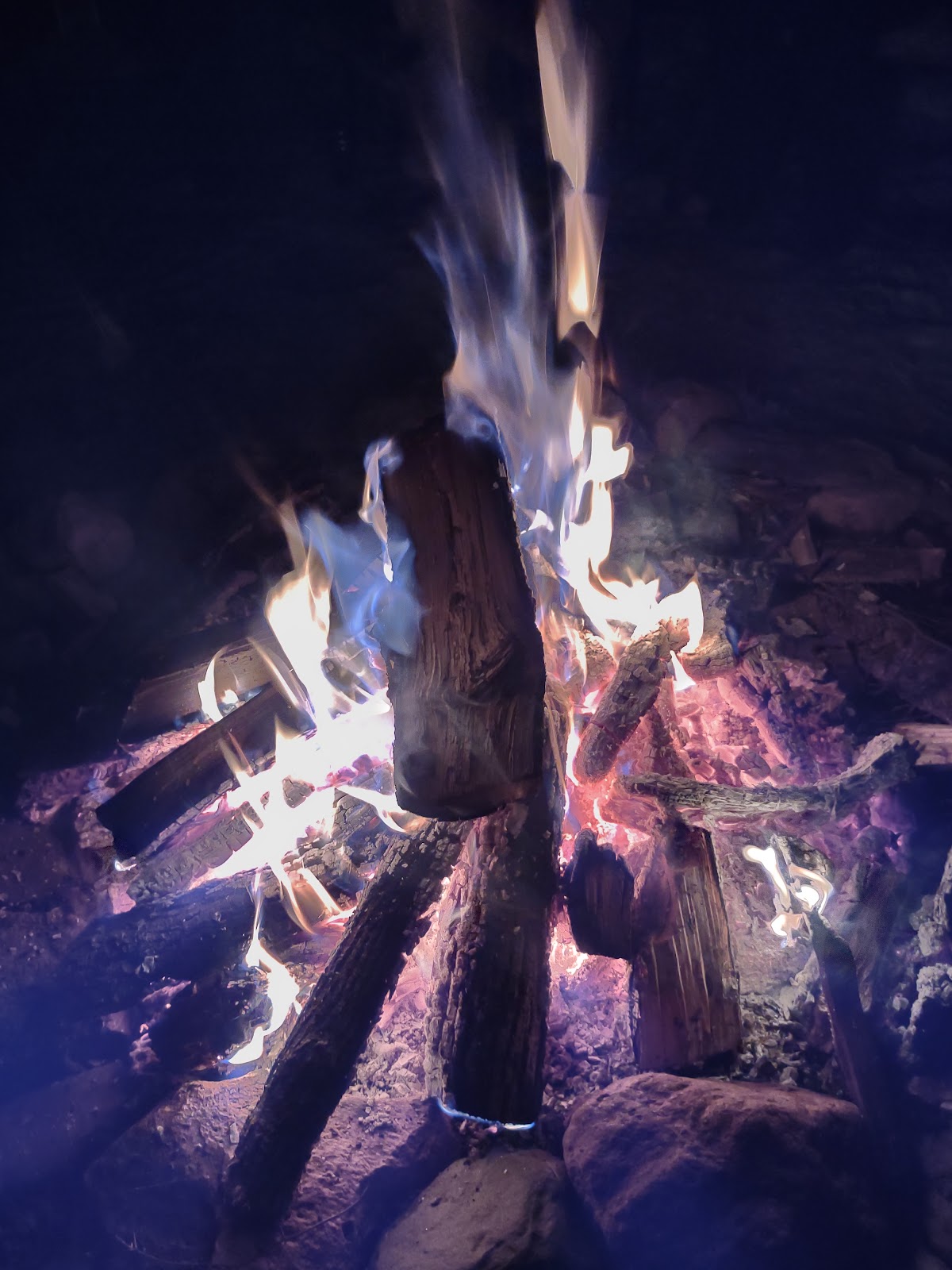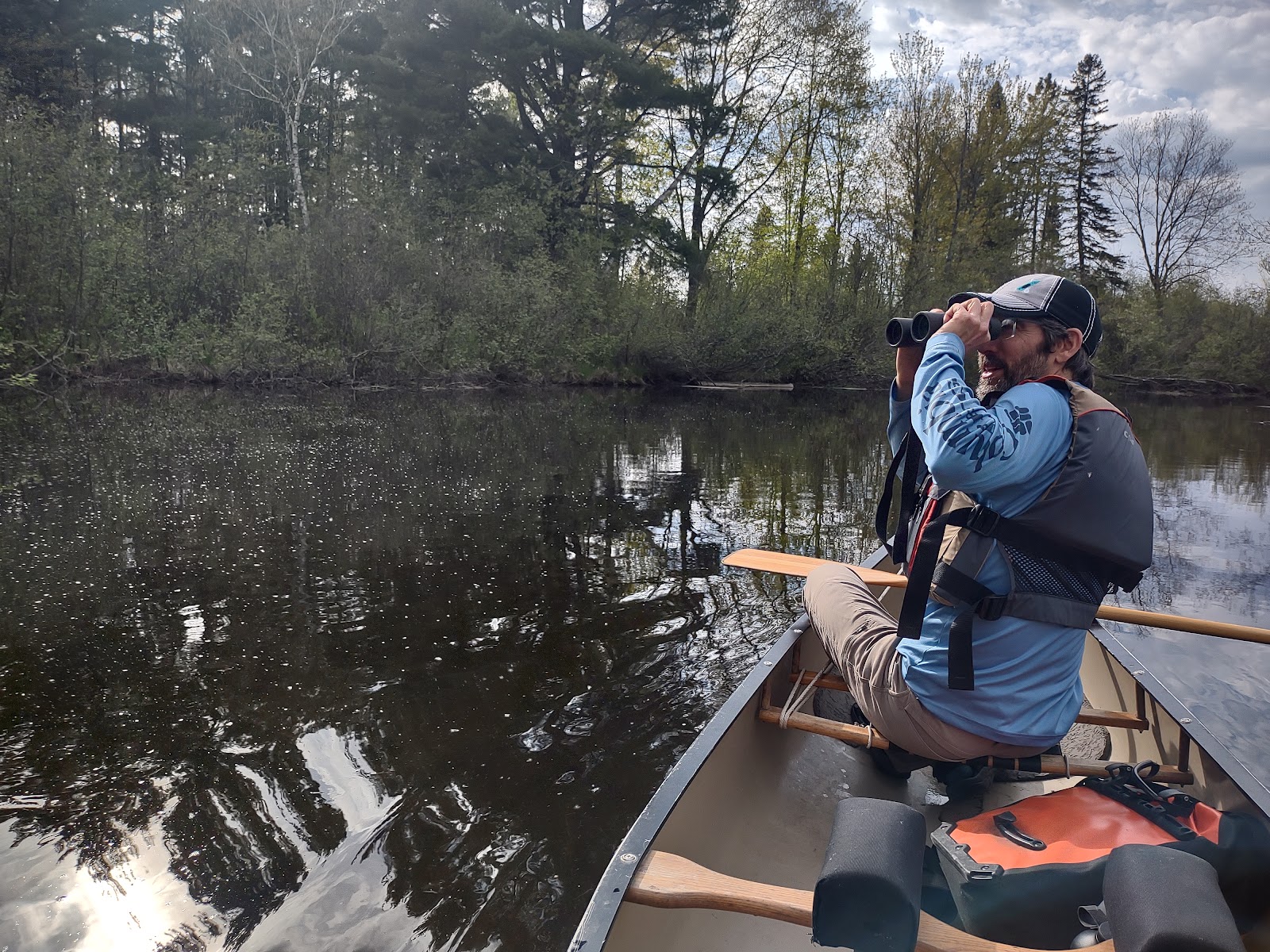Gathered around a bonfire on the Winter Solstice, the hostess asked us each to share one moment from the past year that made us go, “Wow!” Being residents of the Northwoods, we had each experienced many such moments, she acknowledged, but in the interest of time, we must choose just one. “Wow” moments flickered through my memory with the same warmth and brightness of the campfire’s flames. Despite the fact that my year had included rafting the Colorado River through the Grand Canyon, my favorite “wow” moment happened on a river much closer to home.
One lovely afternoon last May, I set out with a friend to paddle an upper section of the Namekagon River. Flights of “mackerel sky” clouds patterned the sky, but plenty of blue shone through. The white blossoms of highbush cranberries and wild cherry trees accented the bright greens of brand-new leaves.
Our goal was to experience the evening chorus of birds as they fueled up on insects before taking off on another night of migration, or defended their newly claimed nesting territory against intruders. Common Yellowthroat Warblers, with their rakish black eye masks, shouted witchety-witchety-witchety from deep within the alders. Dark gray Eastern Kingbirds darted off their perches to catch recently hatched insects. And Gray Catbirds announced their locations with loud mews.
As we reveled in the vibrant life coursing through the spring evening, while also gaining satisfaction from being able to identify so many birds, a Mary Oliver poem came to mind.
“Don't mind my inexplicable delight / in knowing your name, / little Wilson's Warbler”
she wrote.
I quoted this poem to my friend, and then focused back on my steering, since we were coming up to a corner and then a potentially tricky slide down an old, submerged dam under a bridge. As I swung us wide into the corner to make it a straight shot, a burst of twittering, movement, and flashes of yellow in the alder shrubs drew my attention. Squinting, I thought I spotted a black cap on one of the tiny heads, and quickly pulled into an eddy.
Sure enough, our binoculars revealed a flock of half-a-dozen or more little birds, “yellow as a lemon, with a smooth, black cap…” as Mary Oliver described them. Laughing in delight, we felt like we’d just conjured these Wilson’s Warblers with her poem.
 |
| Wilson’s Warblers are bright yellow with a little black cap. Photo by Rhododendrites - Own work, CC BY-SA 4.0, https://commons.wikimedia.org/w/index.php?curid=105248001 |
That poem, titled "Bird in a Pepper Tree," must have been written on a trip to Mexico or Central America, where both the range of the pepper tree and the winter habitat of Wilson’s Warblers overlap. Each spring, the birds leave this narrow refuge and fan out across the continent toward breeding grounds in the far north. Males tend to migrate faster and earlier, rushing north to claim breeding territories ahead of the females’ arrival. Indeed, the little flock, each with a very distinct black cap, all appeared to be males.
As they bounced like fresh popcorn through the willow and alder thickets near the river’s edge, the Wilson’s Warblers perfectly matched the descriptions of their behavior in the bird guides. They tend to stick to the understory, unlike other warblers who will pause on a high perch to belt out a song. Surrounded by leaves, the Wilson’s Warblers pluck caterpillars and aphids off the bushes, and if a flying insect catches their eye, they’ll take to the wing to nab it, returning to nearly the same perch.
It was their greenish-yellow wings, black feathers on their crown, and darting behavior that earned these little birds their first English name: “Green Black-capt Flycatchers” in 1811. Alexander Wilson, an American ornithologist, called them this, following his preference for descriptive names. Ironically, after his death, other ornithologists changed the bird’s name to honor him.
The reason we can call this warbler by such a simple, alliterative name, instead of the harder-to-remember Cardellina pusilla, is that The American Ornithological Society (AOS) has standardized common names. Those standards may soon be modified. In 2023, the AOS committed to “changing all English-language names of birds within its geographic jurisdiction that are named directly after people (eponyms)…”
This decision is not without controversy, but I’m in favor of the change for the simple reason that it feels quite arrogant to call any wild being a possession of someone. Despite the name’s implication, Alexander Wilson doesn’t have any ownership over the Wilson’s Warbler, and never believed he did. Although Mary Oliver died several years before the AOS’s decision, I think she would have agreed. The last line in her poem, after delighting in observing the bird’s behavior and being able to identify them, was “a name is not a leash.”
And yet, by some magic, Mary’s poem and these handsome little warblers were tied together in a moment that made us say, “wow!”
Emily’s award-winning second book, Natural Connections: Dreaming of an Elfin Skimmer, is available to purchase at www.cablemuseum.org/books and at your local independent bookstore, too.
For more than 50 years, the Cable Natural History Museum has served to connect you to the Northwoods. The Museum is open with our brand-new exhibit: “Anaamaagon: Under the Snow.” Our Winter Calendar is open for registration! Follow us on Facebook, Instagram, YouTube, and cablemuseum.org to see what we are up to.



No comments:
Post a Comment